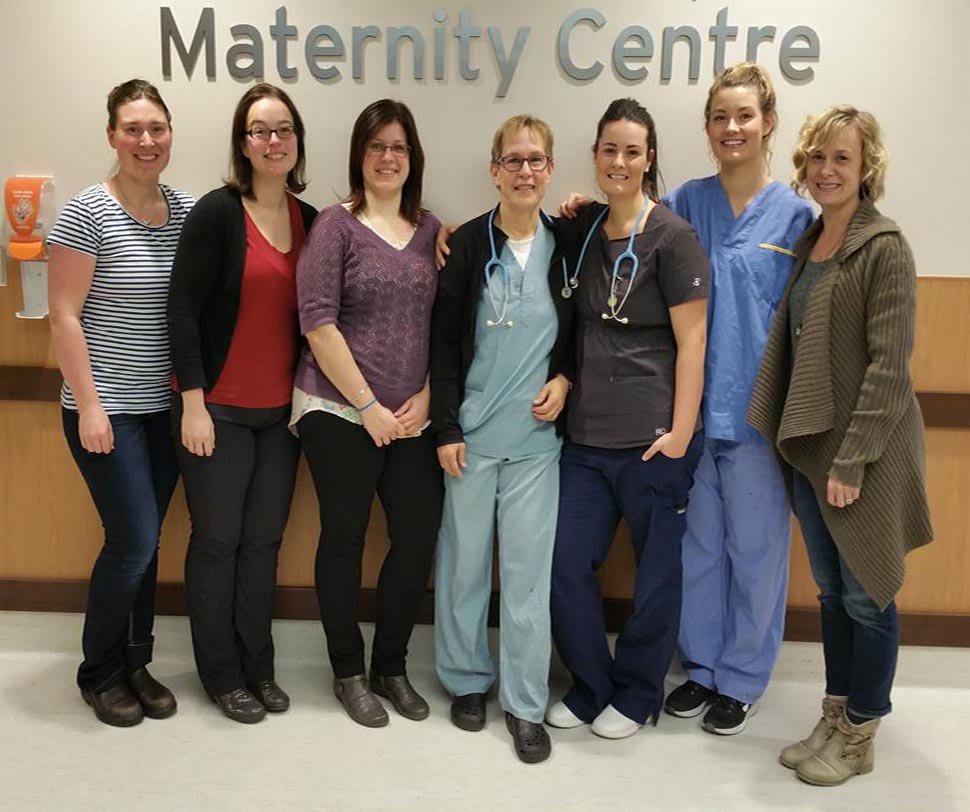Research shows that women who deliver by cesarean section have longer recovery times than those who deliver vaginally. In BC, among women with a repeat cesarean delivery at term without medical indication, 39% have a scheduled repeat cesarean between 37 0 and 38 6 weeks gestation (early term). Such early deliveries are associated with adverse outcomes for the infant, including increased risk of breathing problems, admission to intensive care, infections, and feeding problems.
Scheduling an early repeat cesarean delivery without medical or obstetric reasons has no clear benefit to the mother or infant. A pregnant woman who is healthy and has no medical reasons for delivering early benefits from staying pregnant to at least 39 weeks as the baby’s lungs and brain are still developing in the last weeks of pregnancy.
Access to operating rooms (OR) and staff are important considerations for a planned cesarean section. If OR time is not available, the woman’s cesarean is sometimes scheduled before 39 weeks, even though waiting until at least 39 weeks is optimal for neonatal outcomes.
As noted above, the provincial rate for Indicator 2: Early Repeat Cesarean Delivery was 39% (2014/15), so it is impressive to see that this indicator was 14% for LMH.
The key factor attributing to LMH’s low rate is that its team of six obstetricians shares an office and OR time, which enables them to be flexible and collaborate with each other to determine how best to meet their patients’ needs.
“As a group, we make it a priority to keep early repeat cesareans low,” says Dr. Erica Phelps, Department Head, Obstetrics, Langley Memorial Hospital. “We work together to move patients on the schedule, so they can deliver at an appropriate gestational age and with their usual provider. I think it’s this combination that makes our delivery of care unique.”

The maternity care team is comprised of obstetricians, family physicians, midwives, nurses, and social workers who work collaboratively to provide care to maternity patients. Because of a maternity expansion in the hospital, the maternity clinic and the maternity unit are on the same floor. This allows the multidisciplinary team to be co-located and facilitates easy access to any of the disciplines involved in providing comprehensive, patient-centred care.
Fetal heart rate and rhythm provide information on how well the fetus is tolerating labour. The goal of monitoring the fetus during labour is to prevent injury or death through early detection of abnormal fetal heart rate and initiation of prompt clinical intervention.
There are two methods of monitoring in labor: 1) intermittent auscultation (IA), which is listening to fetal heartbeats at specified intervals; and 2) electronic fetal monitoring (EFM), which is using transducers or sensors attached to a machine to continuously record the fetal heartbeat and contractions.
Historically, EFM was the most common method of fetal surveillance used in BC. However, research comparing IA and EFM has shown that EFM does not decrease neonatal morbidity or mortality, and when used without clinical indications, it can lead to increased use of interventions such as anesthesia, operative vaginal delivery (forceps or vacuum extraction), and cesarean delivery. In addition, mobility is important in labour, and EFM doesn’t allow free movement of the woman, which can cause slow or non-progressive labour. The Society of Obstetricians and Gynaecologists of Canada recommends IA as the method for fetal monitoring during labour for women who are at low-risk of developing adverse outcomes.
The 2014/15 BC rate for using only IA in low-risk deliveries was 72%, but at LMH, it was 86%. One contributing factor to LMH’s high rate is that the hospital had an educator with a passion for fetal health surveillance (FHS) and championed best practices in this area. She worked closely with nurses, physicians, and midwives to apply technology appropriately when necessary and medically indicated. In addition, the FHS course has been mandatory for privileging of health care providers for the last two years.
The benefits of breastfeeding are well-known. Breastfed infants have lower rates of stomach and respiratory infection and may be less likely to develop allergies. Indicator 5 measures the proportion of healthy term babies who received exclusive breast milk (milk from the breast or expressed breast milk from the mother or a donor) as a food source while in hospital.
The 2014/15 BC rate for newborns receiving exclusive breast milk from birth to discharge was 77%, but again, LMH was much higher at 85%. Staff attribute the high rate of exclusive breast milk feeding to nurses who are knowledgeable and passionate in supporting the Baby-Friendly Initiative, took courses to increase their knowledge, and work hard with their patients to initiate latching by ensuring babies are put skin-to-skin with mom shortly after birth. In particular, newborns delivered by cesarean are in the recovery room with their mothers, with labour and delivery nurses providing support in the room. Having the newborn in the room and not taken away to a separate unit increases the likelihood that the mother will initiate skin-to-skin and that latching is facilitated.
Langley Memorial Hospital has a strong strategy in place to ensure optimal care of mothers and their newborns. If you would like to share your strategies to improve perinatal care,
let us know!
